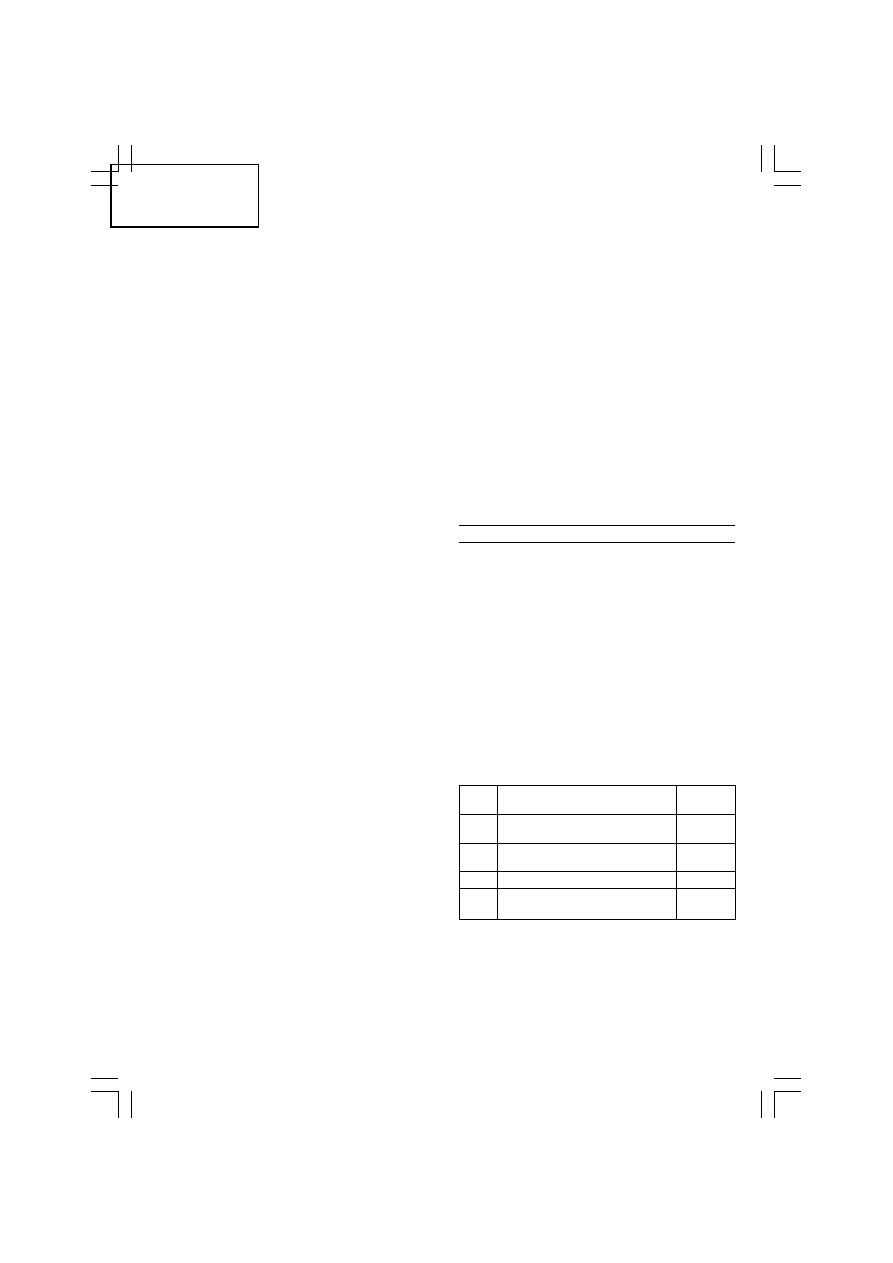
13
English
CAUTION:
Do not look directly into the light. Such actions
could result in eye injury.
3. Cutting metallic materials
CAUTION
䡬
Press the base firmly against the workpiece.
䡬
Never apply any unreasonable force to the saw
blade when cutting. Doing so can easily break the
blade.
䡬
The motor can be locked sometimes, depending on
the combination of the material to be cut and the
blade. Whenever the motor gets locked, switch it
off immediately.
(1) Fasten a workpiece firmly before operation (
Fig. 23
).
(2) When cutting metallic materials, use proper machine
oil (turbine oil, etc.). When not using liquid machine
oil, apply grease over the workpiece.
CAUTION
The service life of the saw blade will be drastically
shortened if you don’t use machine oil.
4. Cutting lumber
When cutting lumber, make sure that the workpiece
is fastened firmly before beginning (
Fig. 24
).
CAUTION
䡬
Never apply any unreasonable force to the saw
blade when cutting. Also remember to press the
base against the lumber firmly.
5. Sawing curved lines
We recommend that you use the BI-METAL blade
mentioned in
Table 3
for the saw blade since it is
tough and hardly breaks.
CAUTION
Delay the feed speed when cutting the material into
small circular arcs. An unreasonably fast feed may
break the blade.
6. Plunge cutting
With this tool, you can perform plunge cutting on
plywood panels and thin board materials. You can
carry out pocket cutting quite easily with the saw
blade installed in reverse as illustrated in
Fig. 26
,
Fig. 28
, and
Fig. 30
. Use the saw blade that is as
short and thick as possible. We recommend for this
purpose that you use BI-METAL Blade No. 107
mentioned,
Table 3
. Be sure to use caution during
the cutting operation and observe the following
procedures.
(1) Press the lower part (or the upper part) of the base
against the material. Pull the switch trigger while
keeping the tip of the saw blade apart from the
material (
Fig. 25
,
Fig. 26
).
(2) Raise the handle slowly and cut in with the saw
blade little by little (
Fig. 27
,
Fig. 28
).
(3) Hold the body firmly until the saw blade completely
cuts into the material (
Fig. 29
,
Fig. 30
).
CAUTION
䡬
Avoid plunge cutting for metallic materials. This can
easily damage the blade.
䡬
Never pull the switch trigger while the tip of the
saw blade is pressed against the material. If you
do so, the blade can easily be damaged when it
collides with the material.
䡬
Make absolutely sure that you cut slowly while
holding the body firmly. If you apply any
unreasonable force to the saw blade during the
cutting operation, the blade can easily be damaged.
NOTE
The use of the battery BCL1015 in a cold condition
(below 0 degree Centigrade) can sometimes result
in the weakened cutting torque and reduced amount
of work. This, however, is a temporary phenomenon,
and returns to normal when the battery warms up.
7. Battery Level Warning Lamp
The battery level can be checked by pulling the
trigger switch while the power tool is in a no-load
state. The battery level warning lamp lights when
the battery power is very low. If this happens,
charge the battery. (
Fig. 5
)
NOTE:
䡬
The level at which the battery level warning lamp
lights may vary due to the ambient temperature,
characteristics of the battery, etc. and is intended
only as a guide.
䡬
The battery level warning lamp may light when the
power tool is overloaded. This does not mean that
the battery power is very low.
Be sure to check the battery level while the tool
is in a no-load state.
SELECTION OF BLADES
To ensure maximum operating efficiency and results,
it is very important to select the appropriate blade best
suited to the type and thickness of the material to be
cut.
NOTE
䡬
Dimensions of the workpiece mentioned in the table
represent the dimensions when the mounting
position of the base is set nearest to the body of
the Cordless Reciprocating Saw. Caution must be
exercised since dimensions of the workpiece will
become smaller if the base is-eounted far away
from the body of the Cordless Reciprocating Saw.
1. Selection of HCS blades
The blade number of HCS blades in
Table 2
is
engraved in the vicinity of the mounting position
of each blade. Select appropriate blades by referring
to
Tables 2
and
4
below.
Table 2: HCS blades
Blade
Thickness
No.
Uses
(mm)
No. 2
For cutting steel pipe less than
30 mm in diameter
2.5 – 6
No. 3
For cutting steel pipe less than
30 mm in diameter
Below 3.5
No. 5
For cutting and roughing lumber
Below 30
No. 96 For cutting stainless steel pipe
less than 30 mm in diameter
Below 2.5
01Eng_CR10D_EE
6/24/09, 11:07
13







































































































